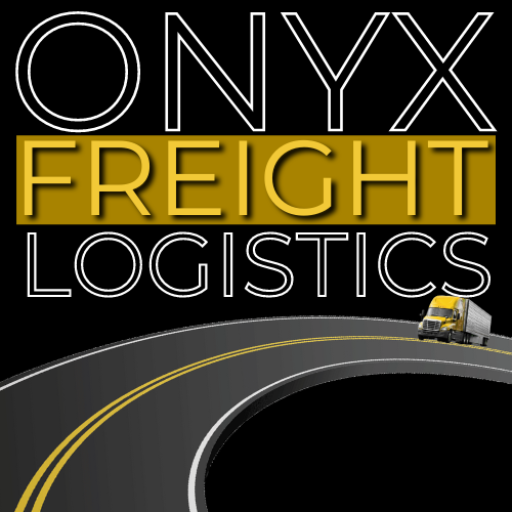GLOSSARY OF SHIPPING TERMS
POPULAR TRANSPORTATION MODES
| IMAGE | EQUIPMENT TYPE | BEST USE |
|---|---|---|
 |
DRY VANS |
Good for up to 52 pallets and 45,000 lbs. (dock high). |
 |
REEFERS |
For refrigerated, temperature-controlled freight (dock high). |
 SPRINTER VANS Good for 4-8 pallets and up to 3,500 lbs. (not dock high). |
||
 BOX TRUCKS Good for 8-12 pallets and up to 10,000 lbs. with fewer requirements (28 ft long, dock high). |
||
 |
FLATBEDS |
Ideal for heavy shipments up to 48,000 lbs. to destinations without shipping docks. |
SPECIALIZED MODES AND OPTIONS
- Conestoga: flatbed trailers with a rolling tarp system to protect cargo
- Removable Gooseneck (RGN): flatbeds with easier loading for heavy cargo (also called double drop lowboy trailers)
- Step Deck: include an upper and lower deck, the latter being used for hauling taller loads with a ramp for loading and unloading
- Rail Yard Drayage: long-term or project work and transloading options for loading/unloading containers
- Rail Intermodal: coast-to-coast rail coverage throughout North America.
- Tankers: LiVe offers food-based tanker options
- Less-than-Truckload (LTL): good for 1-6 pallets, this is often the cheapest mode of transport because of its traditional hub-and-spoke network delivery
- Shared Truckload (STL): combines different customer shipments into the same retailer
- Multi-Stop Delivery: combines the same customer shipments to various destinations
Add Your Heading Text Here
Common Shipping Terminology
Bill of Lading (B/L): A document that establishes the terms of a contract between a shipper and a transportation company. It serves as a document of title, a contract of carriage and a receipt for goods.
Broker: A person who arranges for transportation of loads for a percentage of the revenue from the load.
CFT: Abbreviation for “Cubic Feet.” 1,728 cubic inches. A volume contained in a space measuring one foot high, one foot wide and one foot long.
Container: A truck trailer body that can be detached from the chassis for loading into a vessel, a rail car or stacked in a container depot. The container is made of steel. The most commonly used standard size containers are the 20 and 40 feet long.
Customs: Government agency charged with enforcing the rules passed to protect the country’s import and export revenues.
Customs Entry: All countries require that the importer make a declaration on incoming foreign goods.
Demurrage: A penalty charge against shippers or consignees for delaying the carrier’s equipment beyond the allowed free time. The free time and demurrage charges are set forth in the charter party or freight tariff.
Destination: Location where shipment ends its movement.
Door-to-Door: Household goods are picked up at the shipper’s door (origin) and delivered to the shipper’s door (destination).
ETA: Estimated time of arrival.
FCL: Abbreviation for “Full Container Load.”
Groupage: A consolidation service for putting small shipments into containers for shipment.
In Transit: In transit, or in passage.
Insurance, All-risk: This type of insurance offers the shipper the broadest coverage available, covering against all losses that may occur in transit.
LCL: Abbreviation for “Less than Container Load.” The quantity of freight which is less than that required for the application of a container load rate.
Lift Van: Wooden crate providing “vault like” protection for your export (LCL) shipment.
Non-Vessel Operating Common Carrier (NVOCC): A cargo consolidator in ocean trades who will buy space from a carrier and sub/sell it to smaller shippers.
Origin: Location where shipment begins its movement.
Packing: Putting belongings into boxes, preparing furniture for international shipment. NOT to be confused with loading.
Pallet: A platform with or without sides, on which a number of packages or pieces may be loaded to facilitate handling by a lift truck.
Perils of the Sea: Those causes of loss for which the carrier is not legally liable. The elemental risks of ocean transport.
Port to Door: A shipment loaded at Origin Port and discharged at the shipper’s door (destination).
Port to Port: Shipment loaded at port of origin and discharged at port of destination.
Quarantine: A restraint placed on an operation to protect the public against a health hazard. A ship may be quarantined so that it cannot leave a protected point. During the quarantine period, the Q flag is hoisted.
Ship Demurrage: A charge for delaying a steamer beyond a stipulated period.
Shipper: The person or company who is usually the supplier or owner of commodities shipped.
Shrink Wrap: Polyethylene or similar substance heat-treated and shrunk into an envelope around several units, thereby securing them as a single pack for presentation or to secure units on a pallet.
Terminal Charge: A charge made for a service performed in a carrier’s terminal area.
Transit Time: Length of time it will take your shipment to reach its destination.
Warehouse: A place for the reception, delivery, consolidation, distribution, and storage of goods/cargo.
W.M. (W/M): Abbreviation for “Weight or Measurement;” the basis for assessing freight charges. Also known as “worm.” The rate charged under W/M will be whichever produces the highest revenue between the weight of the shipment and the measure of the shipment. (applies to air shipments)
Add Your Heading Text Here
Common Terminology Found on Moving Proposals
Container Trucking To and From Loading Site: Container is brought to your location for live loading. You also have the option for extended loading time (Drop and Pick) the container will be dropped at your loading location for a period of up to 72 hours. Additional fees will apply.
Live Load – Three (3) Hours Trucker Standby Time. Each additional hour $75.00: The truck driver waits for the container to be loaded; three hours are included in your rate. Additional hours are charged per hour for the truckers wait time
Ocean Freight to the Overseas Port of Entry: Freight cost applies to the sailing of the container by a vessel to an overseas port.
Origin Terminal Handling Charge: This is for the terminal/port handling of the container or shipment at the departure port.
Origin Fuel and Mileage (BAF): Applies toward the trucker and the vessel fuel charges.
Export Documentation: For documentation fillings that must be completed for all shipments (Bill of Lading/AES filing).
Customs Clearance Formalities at Origin: Basic clearance with the arrival customs authority is required for all shipments. If you are clearing your own shipment, it is your responsibility to hire a customs broker for the clearance.
Loading Crew – to load your goods into the container: A loading crew will consist of 2-4 men, depending on the shipment size. The crew will load items from your location into the container.
Customs Clearance Formalities at Destination: Basic clearance with the arrival customs authority is required for all shipments. If you are clearing your own shipment, it is your responsibility to hire a customs broker for the clearance.
Container Trucking To and From Unloading Site: Applies to the trucking of the container or shipment from the port of entry to the unloading destination. Some destinations may be excluded from this service.
Un-Loading Crew – to unload your goods from the container: An unloading crew will consist of 2-4 men, dependant on shipment size. Crew will unload items into your destination location.
Additional pick-up and/or delivery locations: If there is more than one pick up or delivery location additional cost.
Box packing and/or Furniture wrapping service: This is for all labor and materials for packing boxes or wrapping furniture. Price will vary based on amount of goods packed or a flat rate is available.
Shipping Insurance: We recommend purchasing insurance through www.pafinsurance.com. However if you currently hold a renters or homeowners insurance policy, you may already be covered for your move, please contact your policy holder to confirm.
Special Crating (wooden or cardboard): Special crating is usually needed for items such as: statues, motorcycles, artwork, pianos, ect. No crating will be done without your prior approval, additional charges will apply.
Difficult access, Shuttle and/or Long Carry fees: This fee will apply if: the container is blocked from reaching your residence within 75 feet or if the distance the movers must travel to your front door is more than 75 feet away.
Bulky Items Handling Fee (piano, safes, riding mowers, mopeds, ect.): This fee applies to items that have excessive weight or require special equipment or manpower to handle and load.
Double handling fees (involves handling items more than once): This fee will apply if your items have to be loaded, unloaded and then loaded again. This typically applies to storage of goods or when a shuttle is needed.
Stair carry or walk above 1st floor: Additional stair costs are based on the number of flights and the amount of goods being handled. Additional charges may apply.
Customs duties, vat, taxes, customs inspection, examination, customs agency charges, customs penalties: These fees pertain to both US and overseas customs agencies. We are not responsible for these charges and are unaware of any additional cost if an inspection is requested by the customs agency. In order to estimate these charges, please contact your local consulate or destination agent. Please ask your sales rep for destination agent details.
Non-Household goods customs clearance and documentation: This fee applies to customs clearance of any goods other than household effects. Including but not limited to; vehicles, boats, etc.
GRI (General Rate Increase): General rate increase applies to currency exchange differences, steamship line rate increases, additional security fees, etc.
Roll over fees, Storage and/or Demurrage at origin or destination: These fees will apply if your container is held over at the port for any reason. A few reasons for a hold are: non-payment of shipment, customs hold, incomplete paperwork, etc).
Destination THC and port fees: Fee accessed if a barge or ferry is required to get to or from your locations.
EBAF (Emergency Bunker Adjustment Fee): This fee is for the steamship line and truckers. It is the Emergency fuel surcharge.
